The liquid crystal display module is a component that assembles a liquid crystal display device, a connector, an integrated circuit, a PCB circuit board, a backlight, and a structural member. The English name is “LCD Module”, referred to as “LCM”, and Chinese is generally called “LCD Module”. In fact it is a commercial part. According to the provisions of China's relevant national standards: only the non-detachable integrated components are called "modules", and the detachable is called "components". Therefore, the name of the specification should be called "liquid crystal display component". But for a long time people have become accustomed to calling it a "module."
The liquid crystal display device is a high-tech basic component. Although it is widely used, it is still difficult for many people to use and assemble. Especially for dot-matrix liquid crystal display devices, users will feel that they have no way to start. The special connection method and the special equipment required are also not known and possessed by everyone. Therefore, the user of the liquid crystal display device hopes that some people will work together to install the liquid crystal display device together with the control and driving integrated circuit to form a functional component. It can be assembled into a complete system using conventional processes.
Broadly speaking, all components assembled by liquid crystal display devices and integrated circuits are "modules", but in fact, what we usually call "modules" mainly refers to dot matrix liquid crystal display modules assembled by dot matrix liquid crystal display devices. Especially because it is a dot matrix liquid crystal display device product, except for some special large-volume varieties (such as translation machines and communication), the manufacturer supplies liquid crystal display devices directly to users, and almost all general-purpose dot matrix liquid crystal display devices are It is only supplied to the user after being processed into a module, so it is easy to form a misunderstanding that the "liquid crystal module" is a "dot matrix liquid crystal module".
First, digital display liquid crystal module
This is a functional component that is assembled from a segment type liquid crystal display device and a dedicated integrated circuit, and can only display numbers and some identification symbols. Segment type liquid crystal display devices are mostly used in portable, pocket devices. Since some devices are small in size, the display portion is not designed as a separate component as much as possible. Even if some application areas require a separate display component, it should have some information reception, processing, and Functions such as storage delivery are popular in the market because of their general, specific features. The common digital display LCD modules are as follows.
1. Counting module
This is a counting display unit assembled by a seven-segment type liquid crystal display device and a decoding driver of different numbers of bits, or a counter. It has the ability to record, process, and display numbers. At present, the main products that can be seen on the market in China are the unit liquid crystal display device display module driven by CD4055 decoding driver, and the integrated circuit of ICM72ll, ICM7231, ICM7232, CDl4543, UPDl45001, HD44100 and the corresponding matching liquid crystal display device. 4-, 6-, 8-, 10-, 12-, 16-bit counting modules. The following points must be noted when selecting such a counting module:
· Find out the function: Although it is called “counting module”, most of them cannot be counted directly. Some of their input ports are only BCD code interface forms, some are BCD code plus strobe input interface form, and some are interface forms that can be directly connected to serial and parallel ports, etc., if you need to calculate or record one The serial number must also be configured with the corresponding circuit. Of course, there are products that have the counting circuit on the module.
· Look for the structure: LCD devices have different mounting methods and mounting structures. Therefore, in the selection, attention should be paid to its structural characteristics. Generally, such counting modules are mostly made up of zebra conductive rubber strips, plastic (or metal) press frames and PCB boards to assemble liquid crystal display devices and integrated circuits. The outer lead ends are solder joint type, pin type, and circuit board pin type.
· Pay attention to the power supply: One device should use a unified power supply as much as possible. The common LCD display device counting modules are single-supply type and dual-supply type, and have different specifications such as 5V and 9V.
2. Metering module
This is a module assembled with a multi-segment type liquid crystal display device and an integrated circuit chip having decoding, driving, counting, and A/D conversion functions. Since the integrated circuit used has an A/D conversion function, the input analog electric signal can be converted into a digital display. We know that any physical quantity, even chemical quantity (such as pH) can be converted into analog power, so with a certain sensor, this module can realize the measurement and display of any quantity, which is very convenient to use. The integrated circuit models used in the metering module mainly include ICL7106, ICL7116, ICL7126, ICL7136, ICL7135, ICL7129, etc. The functions and characteristics of these integrated circuits determine the functions and characteristics of the metering module. As a metering product, measurement and identification must be carried out according to regulations. Approved by the metrology department, a measurement certificate is attached to the product.
3. Timing module
The timing module uses the liquid crystal display device for the longest timekeeping history. Assembling a liquid crystal display device with a timing integrated circuit is a fully functional timer. It is called the timing module because it does not have the outer casing of the finished watch. Although the timing module is very versatile, the general-purpose and standard-type timing modules are difficult to buy on the market. Only the electronic watch manufacturers can purchase or order the appropriate watch movements. Although the timing module and the counting module have similar appearances, But their display is different, the number displayed by the timing module is composed of two groups of two digits. The number of each digit of the counting module is continuously arranged. Since many timing modules also have timing and control functions, such modules can be widely assembled to some power-up and equipment, such as tape recorders, CD players, microwave ovens, rice cookers and other electrical appliances.
Second, the LCD dot matrix character module
It is assembled from a dot matrix character liquid crystal display device and a dedicated row and column driver, controller and necessary connectors and structural components to display digital and western characters. The dot matrix character module itself has a character generator, and has a large display capacity and a rich function. Generally, the module can display characters of 8 bits, 1 line or 16 bits and more lines at least. The lattice arrangement of such a module is composed of a group arrangement of pixel arrays of 5 x 7, 5 x 8, or 5 x 11. Each group is 1 bit, each bit has a little interval, and each line also has a line interval, so the graphic cannot be displayed.
Generally, in the module control and the driver, there is a character library CGROM which has been solidified with 192 character fonts, and also has a random access memory CGRAM which allows the user to customize the creation of special characters, and allows the user to create eight 5×8 dot matrix characters.
Third, dot matrix graphics LCD module
This module is also a kind of dot matrix module, which is characterized in that the dot matrix pixels are continuously arranged, and the rows and columns are not spaced apart in the arrangement. Therefore, a continuous, complete graphic can be displayed. Since it is also composed of X-Y matrix pixels, characters can be displayed in addition to the display graphics.
1. Row, column driven
This is a module that must be connected to a dedicated controller. The module is only equipped with a universal row and column driver. This driver actually has only the general drive output for the pixel, while the input terminal generally has only 4 bits of data input. , shift signal input terminal, latch input terminal, AC signal input terminal, etc., such as HD44100, IID66100, etc. Such modules must be connected to a control circuit, such as HD61830, SEDl330, etc. to be connected to the computer. This type of module is the most common and most common. Although it needs to use a self-contained controller, it also leaves customers with the freedom to choose different controllers.
2. Row, column drive-control
This is a module that interfaces directly with the computer and relies on the computer to directly control the drive. The column driver used in this type of module has an I/O bus data interface, which can directly hang the module on the bus of the computer, eliminating the need for a dedicated controller, thus reducing the cost of the whole system. For the number of pixels is not large, the whole machine does not have many functions, and the user who is familiar with the programming of computer software is very suitable. However, it will take up some of the resources of your system.
3. Row and column control
This is a built-in controller type dot matrix graphics module. It is also a popular type. Such modules are not only equipped with row and column drivers as in the first type, but also equipped with dedicated controllers such as the T6963C. The controller is an interface between the liquid crystal driver and the computer. It is controlled by the computer in the simplest way, receives and feeds back various information of the computer, manages the display buffer through its own independent information processing, and provides the drive to the drive. The various signals and pulses required are manipulated to implement the display function of the module. This controller has its own set of dedicated instructions and has its own character generator CGROM. The user must be familiar with the detailed instructions of this controller in order to perform the operation. This module frees the user from a series of tasks such as designing, processing, and manufacturing the controller, and the computer avoids the cumbersome control of the display and saves the internal resources of the host system.
We can manufacture a variety of liquid crystal display modules according to customer needs.
Production process:
1. Customer requirements for the product: PCB appearance size, LCD size, positioning size, LCD type, display mode, voltage, temperature, etc.
2. According to the customer's requirements, the company proposed the design plan and produced the drawings.
3. The customer confirms the drawing.
4. Open the mold, sample.
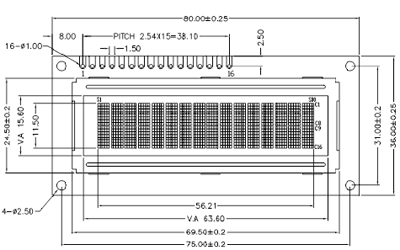
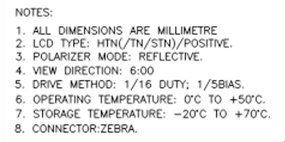
Design legend
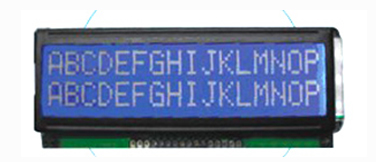
Product example
A. COG: Chip-on-glass means that the driver chip is bonded to the glass. This installation method can greatly reduce the size of the entire LCD, and is easy to mass-produce, and is suitable for LCDs for consumer electronic products, such as portable electronic products such as mobile phones and PDAs, information phones, handheld instruments, and the like.
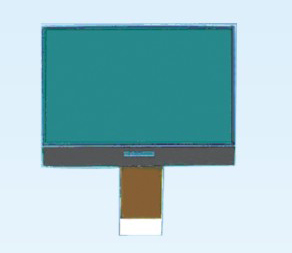
COG
B. COB: Chip-on-board means that the driver chip is bonded on the PCB. It refers to the process in which the bare chip is directly pasted on the printed circuit board, and then the wire bonding is performed, and the chip and the lead are encapsulated by the organic glue.
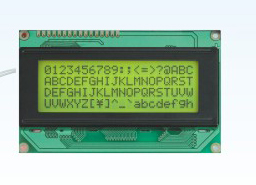
COB
C. TAB: Tape Automatic Bonding is an anisotropic conductive adhesive connection. An IC packaged in the form of a TCP (Tape Carrier Package) is fixed on the LCD and the PCB by an anisotropic conductive paste. This installation method can reduce the weight, volume, convenient installation and reliability of the LCM!
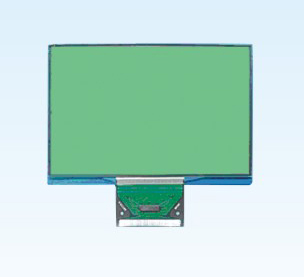
TAB
Shenzhen E Generation & Green Tech Ltd
© 2018-2020 Shenzhen E Generation & Green Tech Ltd All Rights Reserved. 粤ICP备17164667号 Powered by: ytclouds.net